Paris Fashion Week: AW18
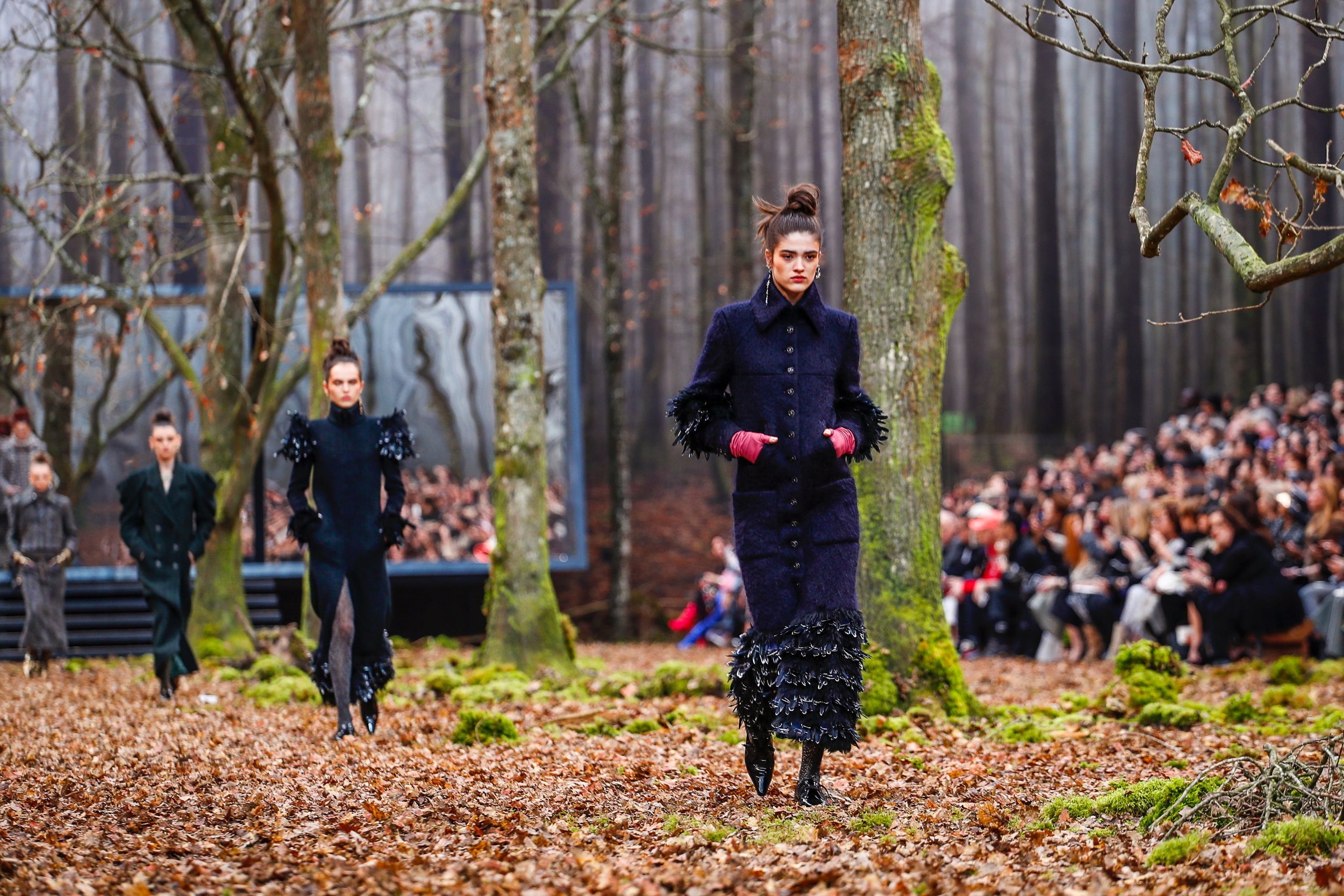 What are four weeks? In what strangely seemed to be a never ending marathon and equally the blink of an eye, we saw triumphs at the Winter Olympics in Pyeongchang, spectacular losses on the stock exchange, The Shape of Water win best picture at the Oscar’s, widespread protests in Italy, the brink of a head scratching trade war, yet another crushing school shooting in the US. And amongst it all? Hundreds upon hundreds of collections presented in four countries, with both green and seasoned creators offering their own visions for the autumn season.Does fashion “month” today seem so long because we have been re-wired for information immediacy all at a casual swipe? Is it the never-ending product pushing, which seems out of touch with our shift towards sustainability? Is it the fact that our jobs in fashion reporting never end thanks to an always online audience?Whatever it may be - the final stop on the fashion calendar makes all of the travel and the sleepless nights worth it. The magic of Paris remains and as expected, provided the greatest substance due to thought provoking, rich collections. Although most designers opted to play it “safe”, within such a turbulent climate sticking to tried and tested codes was a winning recipe.
What are four weeks? In what strangely seemed to be a never ending marathon and equally the blink of an eye, we saw triumphs at the Winter Olympics in Pyeongchang, spectacular losses on the stock exchange, The Shape of Water win best picture at the Oscar’s, widespread protests in Italy, the brink of a head scratching trade war, yet another crushing school shooting in the US. And amongst it all? Hundreds upon hundreds of collections presented in four countries, with both green and seasoned creators offering their own visions for the autumn season.Does fashion “month” today seem so long because we have been re-wired for information immediacy all at a casual swipe? Is it the never-ending product pushing, which seems out of touch with our shift towards sustainability? Is it the fact that our jobs in fashion reporting never end thanks to an always online audience?Whatever it may be - the final stop on the fashion calendar makes all of the travel and the sleepless nights worth it. The magic of Paris remains and as expected, provided the greatest substance due to thought provoking, rich collections. Although most designers opted to play it “safe”, within such a turbulent climate sticking to tried and tested codes was a winning recipe. The overarching aesthetic of the Paris collections drew from various interpretations of what it means to be a strong woman today. Less successful designers addressed the current movement of Me Too with predictable masculine symbolism while frontrunners approached female power with honest softness. The poetic romanticism of Pierpaolo Piccioli at Valentino was assertive - not aggressive- and proved that flowers and elegant layering too can sustain power.
The overarching aesthetic of the Paris collections drew from various interpretations of what it means to be a strong woman today. Less successful designers addressed the current movement of Me Too with predictable masculine symbolism while frontrunners approached female power with honest softness. The poetic romanticism of Pierpaolo Piccioli at Valentino was assertive - not aggressive- and proved that flowers and elegant layering too can sustain power.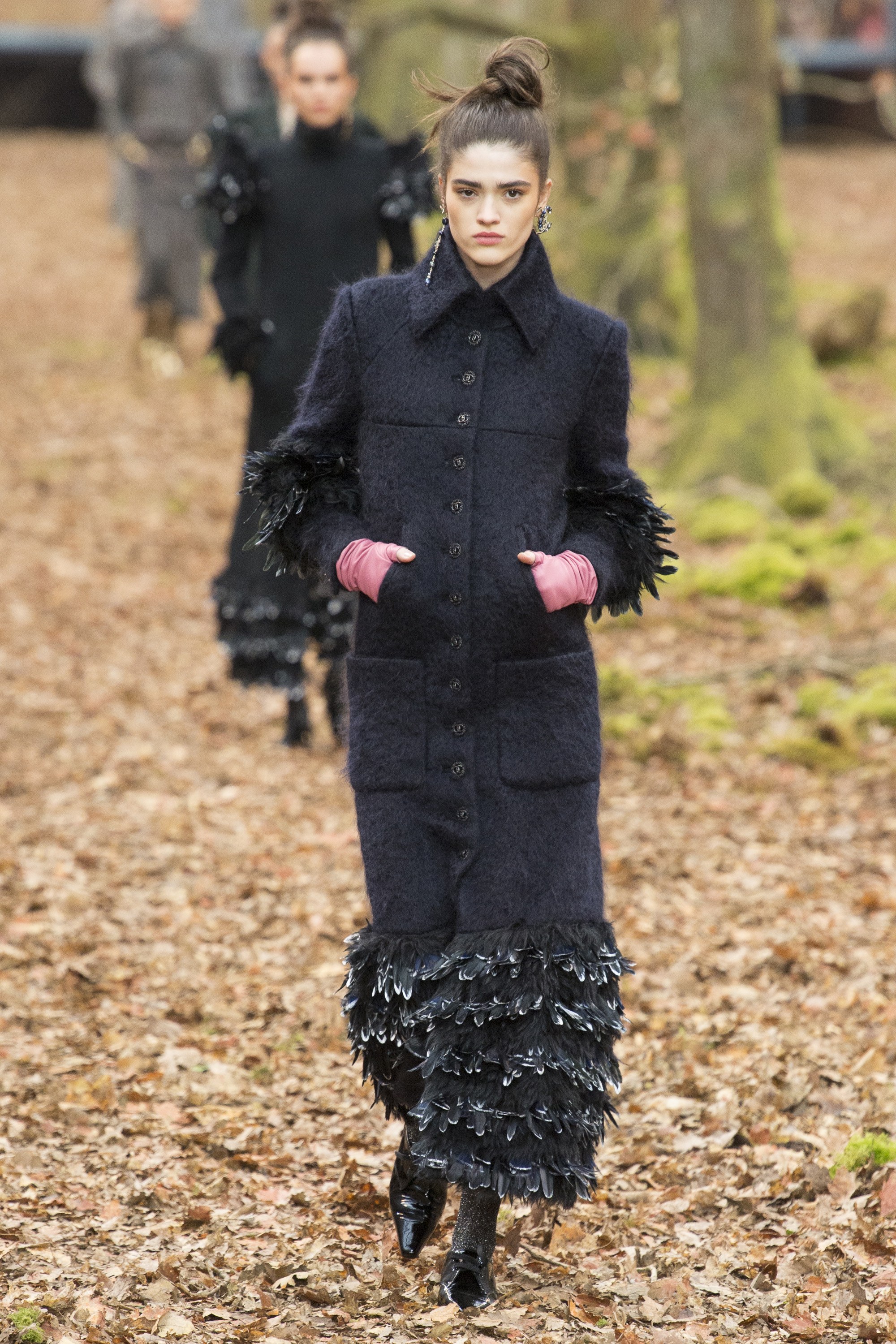 Another fine show of feminine strength was Chanel’s “Leave me alone” collection, set in the Grand Palais which was transformed into an autumnal park complete with live Oak trees. The fallen leaves crunched beneath the women who determinedly marched through the woods. Seemingly on their way to a destination, alone and unbothered, they dazzled in long Edwardian silhouettes painted in muted shades, save for intermittent punches of colour usually in form of leather evening gloves, which conjured up an image of 1980’s movie star glamour. Chanel - and other brands such as Loewe - also offered a practical hands-free solution in storing important tokens in form of fanny packs or clothing with deep pockets. (Today, one can’t be bogged down by heavy handbags!)While the focus on feminine strength played a critical role across all fashion weeks, what was so impressive with Paris was how this was exhibited through the design teams themselves.
Another fine show of feminine strength was Chanel’s “Leave me alone” collection, set in the Grand Palais which was transformed into an autumnal park complete with live Oak trees. The fallen leaves crunched beneath the women who determinedly marched through the woods. Seemingly on their way to a destination, alone and unbothered, they dazzled in long Edwardian silhouettes painted in muted shades, save for intermittent punches of colour usually in form of leather evening gloves, which conjured up an image of 1980’s movie star glamour. Chanel - and other brands such as Loewe - also offered a practical hands-free solution in storing important tokens in form of fanny packs or clothing with deep pockets. (Today, one can’t be bogged down by heavy handbags!)While the focus on feminine strength played a critical role across all fashion weeks, what was so impressive with Paris was how this was exhibited through the design teams themselves.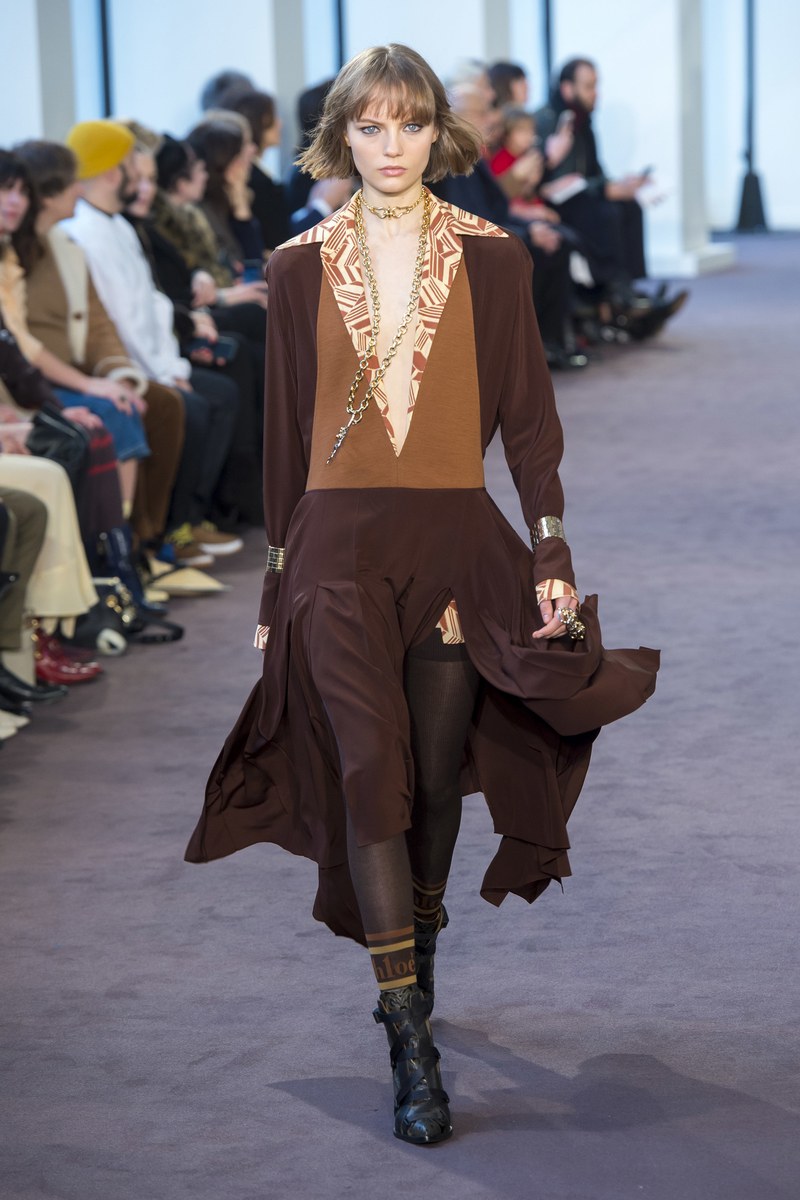 Natacha Ramsay-Levi continued to impress with her sophomore collection at Chloé, celebrating an effortlessly cool bourgeoisie look. There was Sarah Burton at McQueen who exhibited a “soft armour for women” with everything from female tuxedos to Oscar worthy gowns. Maria Grazia Chiuri, her strongest collection yet at Dior, paid homage to the 50th anniversary of the Paris student protests of 1968 through crafty patchworks and embroidery. Clare Waight Keller at Givenchy presented an outstanding collection, basing it on an examination of the Berlin club scene. Through an intelligent mix of modern “sleazy” furs (faux!), bold shoulders and cinched waists, she has successfully managed to stay true to Hubert de Givenchy’s legend and has built upon the tough, raw sexiness left by Riccardo Tisci.
Natacha Ramsay-Levi continued to impress with her sophomore collection at Chloé, celebrating an effortlessly cool bourgeoisie look. There was Sarah Burton at McQueen who exhibited a “soft armour for women” with everything from female tuxedos to Oscar worthy gowns. Maria Grazia Chiuri, her strongest collection yet at Dior, paid homage to the 50th anniversary of the Paris student protests of 1968 through crafty patchworks and embroidery. Clare Waight Keller at Givenchy presented an outstanding collection, basing it on an examination of the Berlin club scene. Through an intelligent mix of modern “sleazy” furs (faux!), bold shoulders and cinched waists, she has successfully managed to stay true to Hubert de Givenchy’s legend and has built upon the tough, raw sexiness left by Riccardo Tisci.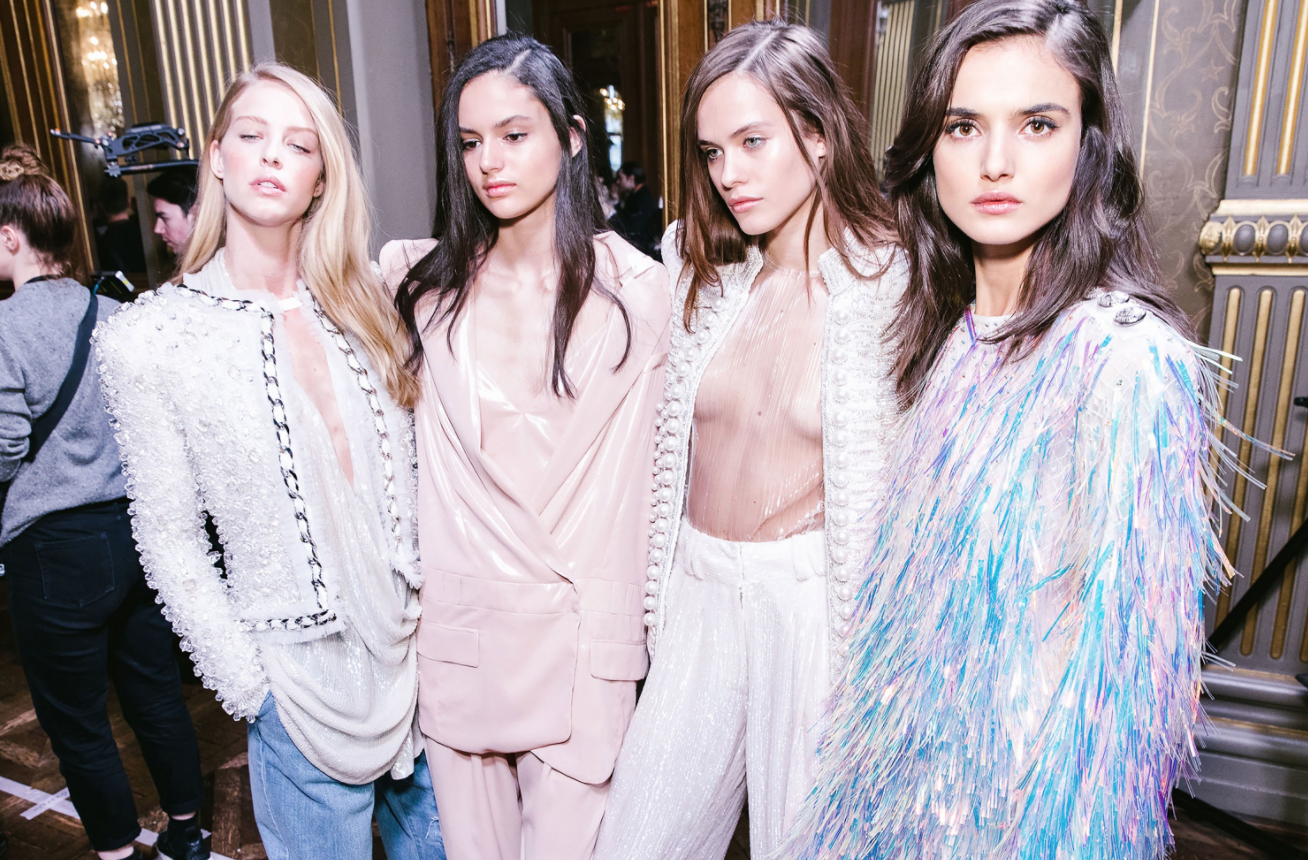 In terms of dominating trends, it is all about futuristic metallics, bursts of neon and an oversized silhouette. Time’s Up in staying silent and conforming - time to be seen! Heard! Respected! Most obvious in a futurist narrative was Olivier Rousteing at Balmain who envisioned a collection for 2050 which meant metallic-finishes, sequinned trenches, and black PVC which twinkled prismatic colour once in the light. Neon fringed boucle and holographic raffia-fringed dresses also reinforced this light-reflecting effect. As most of the fashion audience today seems to live stream fashion shows, Rousteing capitalised on the opportunity to announce his newly launched filter on Snapchat. Presenting a collection that would take advantage of this new filter only makes sense.Paris fashion week and by extension Milan, London and New York inspired a call for action. Most successful in making this point was no doubt Undercover - the show of the week - if not the season. Jun Takahashi presented an extraordinary collection best described as an exploration of the teenage American psyche as idealised by the Japanese outsider. 15 year old Sadie Sink, who played Max in Season 2 of Stranger Things, opened the show in a red tracksuit and glittery beanie and Nike sneaks. Following looks resonated with what real kids would wear today, making their way from homeroom to AP English - a selection of Varsity jackets, polo shirts, striped blazers, destroyed denim. Messages of Total Youth, Unbroken Innocence, Be Aggressive Passive…Aggressive were featured on the clothes.
In terms of dominating trends, it is all about futuristic metallics, bursts of neon and an oversized silhouette. Time’s Up in staying silent and conforming - time to be seen! Heard! Respected! Most obvious in a futurist narrative was Olivier Rousteing at Balmain who envisioned a collection for 2050 which meant metallic-finishes, sequinned trenches, and black PVC which twinkled prismatic colour once in the light. Neon fringed boucle and holographic raffia-fringed dresses also reinforced this light-reflecting effect. As most of the fashion audience today seems to live stream fashion shows, Rousteing capitalised on the opportunity to announce his newly launched filter on Snapchat. Presenting a collection that would take advantage of this new filter only makes sense.Paris fashion week and by extension Milan, London and New York inspired a call for action. Most successful in making this point was no doubt Undercover - the show of the week - if not the season. Jun Takahashi presented an extraordinary collection best described as an exploration of the teenage American psyche as idealised by the Japanese outsider. 15 year old Sadie Sink, who played Max in Season 2 of Stranger Things, opened the show in a red tracksuit and glittery beanie and Nike sneaks. Following looks resonated with what real kids would wear today, making their way from homeroom to AP English - a selection of Varsity jackets, polo shirts, striped blazers, destroyed denim. Messages of Total Youth, Unbroken Innocence, Be Aggressive Passive…Aggressive were featured on the clothes.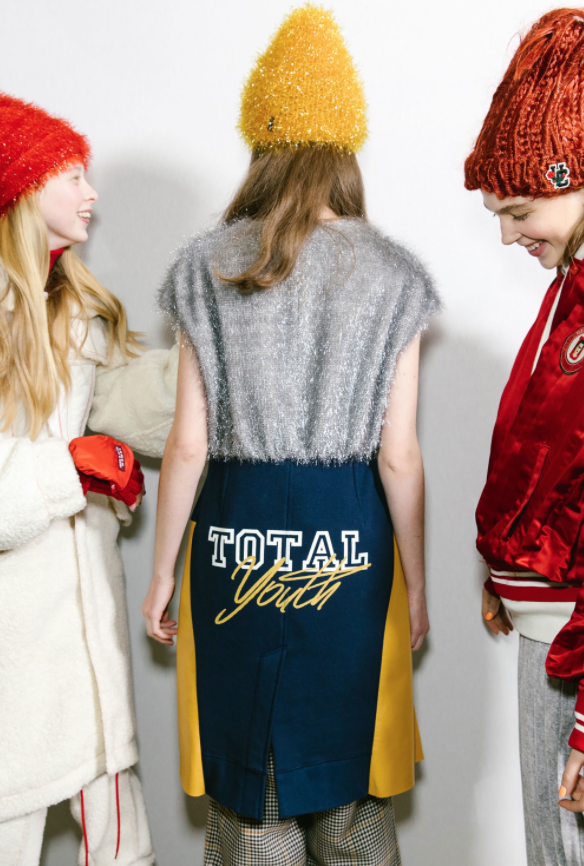 Of course Takahashi had planned his collection long before the school shooting at Marjory Stoneman Douglas High School. However, due to the timing, and how these young girls marched together to the sound of David Bowie’s “Heroes” all wearing a uniform of parkas and rain boots branded We Are Infinite, it was an incredibly emotional ode to this young generation who has come together collectively taking a stand against gun violence and their - no, our* futures.Remember, physical clothing is only a singular element in fashion - this season reminded us that in a sea of product, it is the intangible message which transcends and which counts at the end of the day.And at a very long month.
Of course Takahashi had planned his collection long before the school shooting at Marjory Stoneman Douglas High School. However, due to the timing, and how these young girls marched together to the sound of David Bowie’s “Heroes” all wearing a uniform of parkas and rain boots branded We Are Infinite, it was an incredibly emotional ode to this young generation who has come together collectively taking a stand against gun violence and their - no, our* futures.Remember, physical clothing is only a singular element in fashion - this season reminded us that in a sea of product, it is the intangible message which transcends and which counts at the end of the day.And at a very long month.
